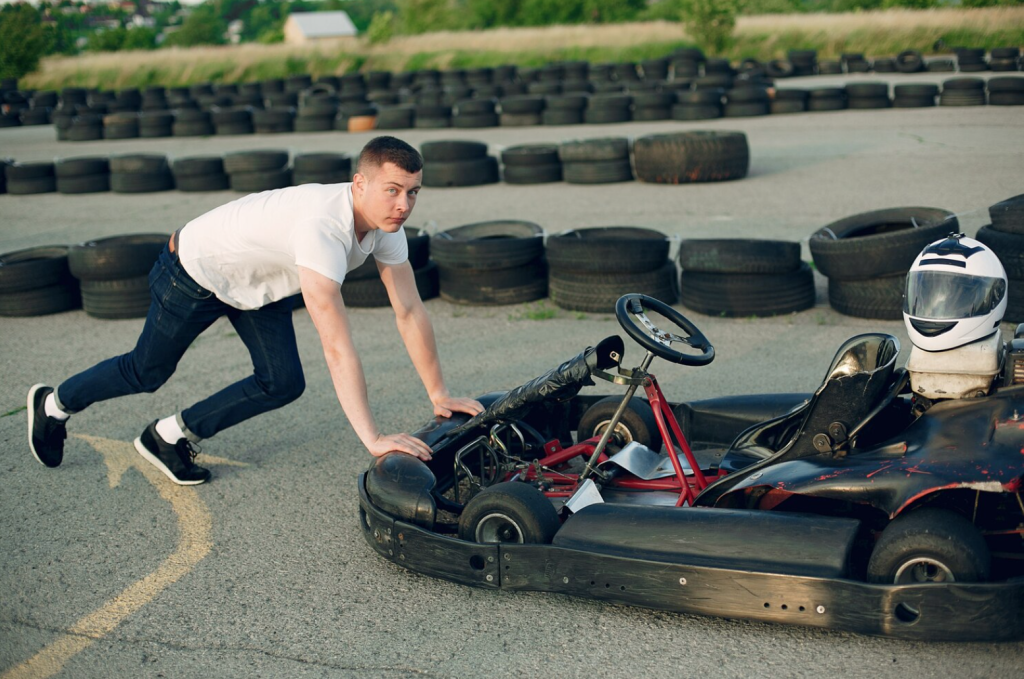Introduction: A well-designed racing seat is crucial for providing the comfort and support needed during intense track sessions. While off-the-shelf racing seats can be expensive, building your own seat offers a cost-effective alternative without compromising on safety or performance. In this guide, we’ll explore how to construct a racing seat tailored to your preferences, providing comfort, support, and safety on a budget.
- Assessing Your Needs and Preferences:
- Understanding your requirements: Considering factors such as body size, driving position, and intended use (e.g., track days, autocross, or daily driving).
- Identifying features: Determining the desired features such as seat shape, bolstering, padding thickness, and material preferences (e.g., fabric, vinyl, or suede).
- Gathering Materials and Tools:
- Seat frame: Choosing a suitable racing seat frame or repurposing an existing seat frame from a salvage yard or donor car.
- Padding and upholstery: Selecting high-density foam padding and durable upholstery material to provide comfort and durability.
- Mounting hardware: Acquiring mounting brackets, sliders, and hardware necessary for securely installing the seat in the vehicle.
- Tools: Gathering basic tools such as a saw, drill, staple gun, and sewing machine for fabricating and upholstering the seat.
- Designing and Fabricating the Seat Frame:
- Planning the design: Sketching out the seat shape and dimensions based on your body measurements and ergonomic considerations.
- Constructing the frame: Building the seat frame using steel tubing or aluminum stock, ensuring structural integrity and compliance with safety standards.
- Adding reinforcement: Strengthening critical areas of the frame with additional bracing or gussets to withstand the forces encountered during track driving.
- Shaping and Padding the Seat:
- Cutting and shaping foam: Carving high-density foam to create supportive contours and bolsters that conform to the driver’s body shape.
- Layering padding: Building up layers of foam padding to achieve the desired thickness and firmness for optimal comfort and support.
- Securing padding: Attaching foam padding to the seat frame using adhesive or fasteners, ensuring a snug fit and minimal movement.
- Upholstering the Seat:
- Cutting upholstery material: Trimming upholstery fabric or vinyl to size, leaving sufficient allowance for wrapping and stapling.
- Wrapping the seat: Stretching and stapling upholstery material tightly over the foam padding, starting from the center and working outward to achieve a smooth, wrinkle-free finish.
- Adding finishing touches: Sewing or gluing additional details such as piping, trim, or logos to customize the appearance of the seat.
- Installing the Seat in the Vehicle:
- Mounting brackets: Attaching mounting brackets to the seat frame, ensuring proper alignment and compatibility with the vehicle’s mounting points.
- Adjusting seat position: Installing sliders or adjustable mounts to allow for fine-tuning of the seat position and driving ergonomics.
- Securing the seat: Bolting the seat securely to the vehicle floor using appropriate hardware, verifying stability and rigidity before use.
Conclusion: Building your own racing seat offers a cost-effective way to achieve comfort, support, and safety tailored to your specific needs and preferences. By following this step-by-step guide and investing time and effort into the construction process, enthusiasts can create a custom racing seat that enhances their driving experience on the track without breaking the bank. Whether you’re a budget-conscious racer or a DIY enthusiast, building your own racing seat ensures that comfort and performance go hand in hand without compromise.



